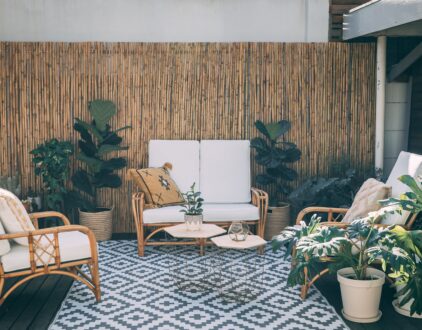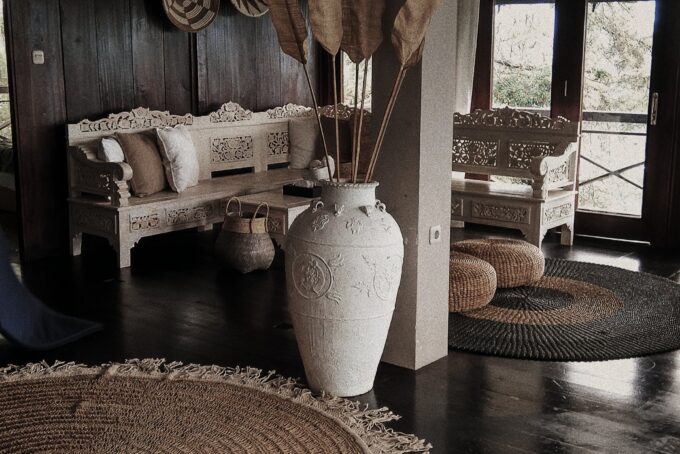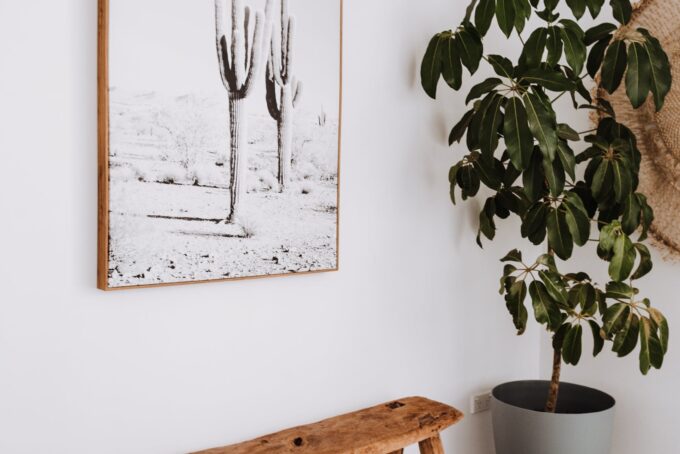In today’s interior design landscape, sustainability is not just a buzzword—it’s a personal value. With increasing awareness of environmental issues, you might be taking a second look at traditional furnishings in favor of choosing eco-friendly alternatives. Vegan leather has long been touted as leather’s more responsible cousin, free of animal products. But what is it actually made of, and is it really better for the environment?

The Origins of Leather
Traditional leather is made from the skins of animals, primarily cattle. The process involves tanning the animal hides to preserve them and create a durable material to apply them from clothing to furniture upholstery.
Unsustainable Practices
Despite its popularity, traditional leather production poses significant environmental challenges. The intensive farming of animals for leather leads to deforestation, habitat destruction, and greenhouse gas emissions. Additionally, the tanning process involves the use of toxic chemicals such as chromium, which can pollute waterways and harm ecosystems.
A Shift Toward Conscious Living
Vegan leather offers a compelling solution if you’re an eco-conscious consumer who has a hard time giving up the soft, luxurious feel of leather. From sofas and chairs to ottomans and pillows, this material can be incorporated into so many kinds of home decor, creating spaces that are as chic as they are sustainable.
Beyond Beauty: The Ethical Advantage
Vegan leather mimics the texture and appearance of the real deal but is produced without the use of animal products. While some iterations of vegan leather, particularly those in fast fashion, rely on plastic-based materials like PVC and polyurethane, others utilize sustainable biomaterials such as cork, paper, apple skins, and even bananas. These plant-based alternatives present a greener option for conscious consumers.
Is it really better for the environment?
The answer is, it depends. The sustainability of vegan leather hinges on its production methods and materials. While plant-based alternatives offer a more environmentally friendly option, plastic-based vegan leather still has its issues. Plastic-derived materials can take years to degrade, contributing to pollution and environmental degradation.

Other Eco-Friendly Alternatives
If vegan leather suddenly has you unconvinced, there are plenty of environmentally friendly alternatives to explore.
Cork
Cork is a natural, renewable material harvested from the bark of cork oak trees. It’s durable, water-resistant, and biodegradable, making it an excellent eco-friendly alternative to leather for furniture upholstery, flooring, and accessories.
Piñatex (Pineapple Leather)
Piñatex is a sustainable textile made from pineapple leaf fibers, a byproduct of the pineapple industry. It offers similar qualities to traditional leather, such as durability and flexibility, while reducing waste and supporting farming communities.
Recycled Materials
Repurposing materials like recycled plastic, rubber, or even apple skins can create eco-friendly alternatives to leather. These recycled materials help divert waste from landfills while also contributing to a circular economy by reducing the need for better resources.
More Ways to Have an Eco-Friendly Home
- Lighting: Energy-efficient lighting options, such as LED bulbs and fixtures, can significantly reduce electricity consumption compared to traditional incandescent or fluorescent lighting. Additionally, fixtures made from recycled materials or sustainable wood add an eco-friendly vibe to any room.
- Textiles: When choosing textiles such as rugs, curtains, and upholstery, make sure to select materials that are organic, sustainably sourced, or made from recycled fibers. Look for certifications such as Global Organic Textile Standard (GOTS) or OEKO-TEX Standard 100 to ensure that the textiles meet rigorous environmental and social criteria.
- Appliances: Energy-efficient appliances, including refrigerators, washing machines, and dishwashers, not only reduce energy consumption but also lower utility bills. Look for products with the ENERGY STAR label, which indicates that they meet or exceed strict energy efficiency guidelines set by the U.S. Environmental Protection Agency.
popular posts
- 1It’s Black Business Month, So Let’s Go Shopping and #BuyBlack!
- 2These Home Decor Items Will Instantly Make Your Space Look Outdated
- 3Black-Owned Home Decor Stores To Support Across the United States
- 4A Look Inside Elon Musk's Tiny $50,000 House
- 57 Black and Multicultural Designers To Follow For Design Inspo
Decorate
Access design inspiration that infuses personality and culture into your spaces.

Up to 15% Off: 4 Best Patio Furniture Finds
by Stephanie Taylor | January 18, 2023

7 Black and Multicultural Designers To Follow For Design Inspo
by Marissa | January 18, 2023

These Candle Making Kits Will Elevate the Vibe of Your Home
by Arielle Clay | January 19, 2023
Spaces
Whether it’s luxury or ease, every area of your home should be as fabulous and unique as you.

The Ultimate Rug Guide: Different Sizes and Where they Look Best
by Melody Beuzelin | January 29, 2024
The Top Furniture Companies With the Easiest Furniture To Assemble
by Brittni Williams | February 14, 2024
FOLLOW ALONG ON INSTAGRAM
#homeandtexture
Find us on social for more home inspiration where culture, personal style, and sophisticated shopping intersect to help you create a home where you love to live.




